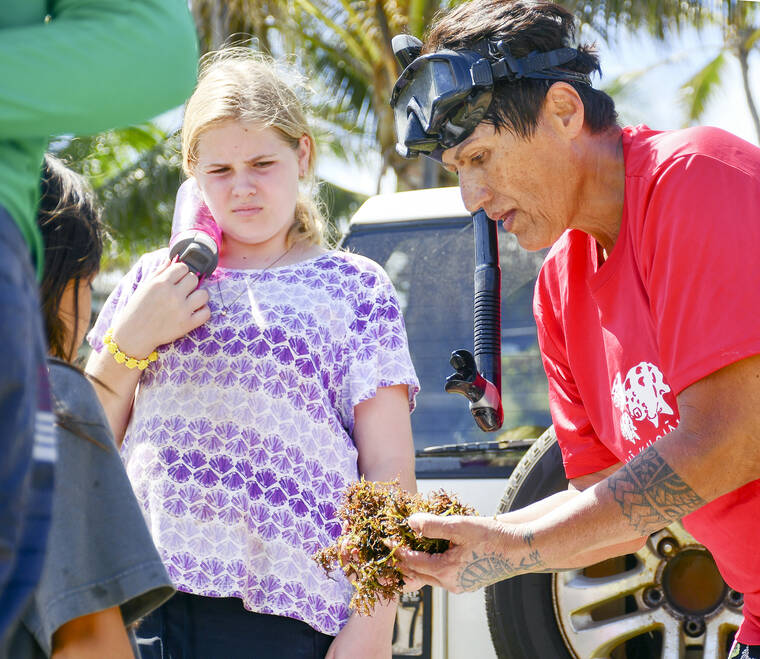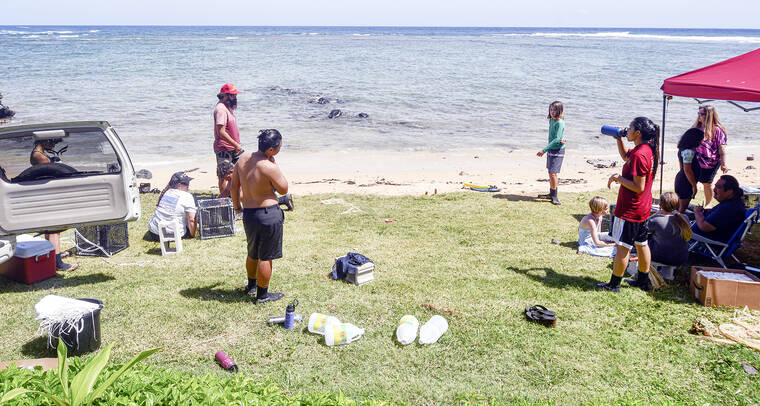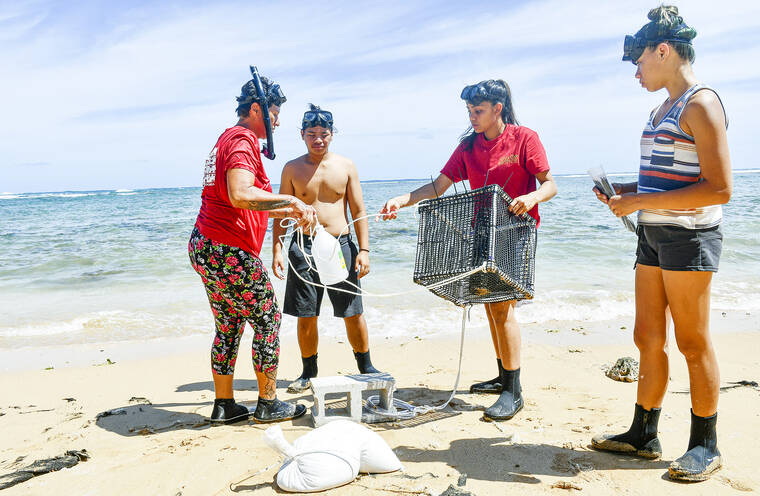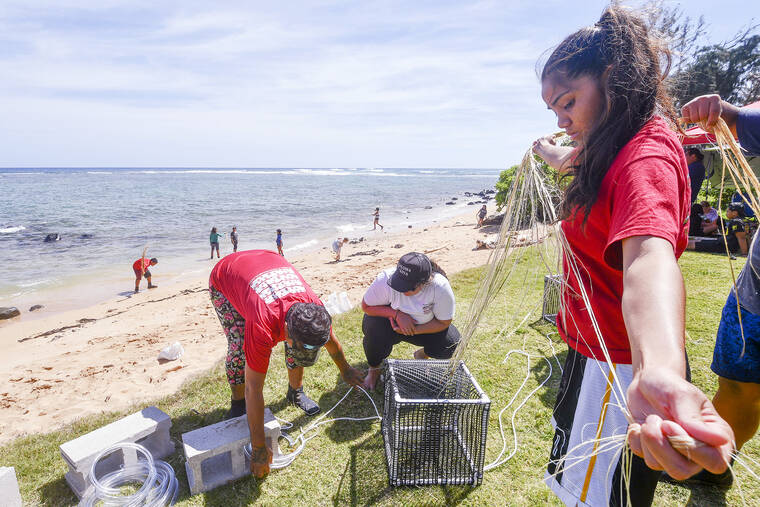‘ALIOMANU — Self-proclaimed limu practitioner Nalani “Tutu” Kaneakua was pleased that Gov. David Ige proclaimed this to be the Year of the Limu, recognizing limu as playing a significant role in Native Hawaiian traditions and ahupua‘a stewardship.
“No mo’ limu, no mo’ fish,” Kaneakua said, summarizing the role of limu in Hawaiian life and outlined in the gubernatorial proclamation signed in January.
After taking over from her father, Hosea Lovell, more than 20 years ago, Kaneakua’s focus looks to restore limu in those areas where limu once flourished, working under a special permit from the state Department of Land and Natural Resources issued to Anuenue Research Center and Wally Ito. She changed the name from Ko‘olau Limu Project to accommodate areas larger than just the Ko‘olau area.
“He supplies all the limu (starters) we use,” Kaneakua said. “The research center oversees the limu hui that are across the state.”
Kaneakua capitalized on the spring break to get the Kanuikapono Public Charter School’s limu project rooted in the waters off ‘Aliomanu Beach, having students and staff create hale (houses), locate the completed, placed structures and check on the growth before harvesting.
“That’s their spring break topic — limu,” Kaneakua said. “The goal is food. We’re planting limu manauea, a type of brown or red limu. We have half a pound of limu that was sent over, and once established, this will yield between 3 to 5 pounds of limu. If we have eight hale to start, that comes out to between 20 and 40 pounds of limu.”
The limu cages are called hale, Kaneakua said. In addition to housing the limu, if you check within the week, it will contain a lot of little fish that adopt the cages for safety from larger fish. They have the growing limu as food and the shelter the cage provides a home not only for the limu, but for its new inhabitants.
The Year of the Limu proclamation states that limu serves key ecological and economic functions, preventing erosion and coral breakage, creating oxygen, producing sand, serving as food and shelter for marine animals, mitigating global warming through carbon sequestration, and acting as the base of the food-web on which local fisheries rely.
“Do you realize that 70 percent of the air we breathe comes from seaweed?” Kaneakua said.
The completed hale are located in sand troughs within the beach area, anchored by bricks and sandbags attached to the hale with nylon roping. Other specimens are anchored to the coral reef using fiber derived by pounding and cleaning hau roots.
When harvesting, or apapa, the important part is to cut similar to mowing the yard, not grabbing and pulling, Kaneakua said.
“If you pull, you destroy the plant,” Kaneakua said. “If you cut, it keeps growing, and there’s more for when you need it the next time. This place was full of limu at one time. But over the years, construction of new houses and overharvesting, there’s hardly anything. Now, we want to put back what was there.”
The Year of the Limu proclamation states that limu is an integral part of the traditional Hawaiian diet and also used for medicinal, religious, and cultural purposes.
“The important part of this project is learning what you’re going to do with the limu once you harvest,” Kaneakua said. “The school will start its limu collection by drying and pressing. The collection is for education and learning the different kinds of limu and what they are used for. And cooking. I have a collection of recipes using limu.”
The Year of the Limu acknowledges the critical role limu plays in culture and the environment, and recognizes the crucial endeavor of protecting, restoring and perpetuating both limu and knowledge about limu.








